The Satun National Museum is a must visit for the inside scoop on Satun’s history. Like much of Northern Malaysia and other parts of Southern Thailand, Satun’s history is fascinatingly complex. In a nutshell, once upon a time, Satun was part of a Malay state known as the Kingdom of Setul Mambang Segara (Setul) from 1808 -1916. Satun was also one of the unfortunate southern regions that were divided as a result of the Siam Anglo treaty of 1909 signed between the Siamese government and the British colonialists of Malaya. Part of Satun went to Siam (now Thailand) and the other part to British Malaya (now Malaysia).
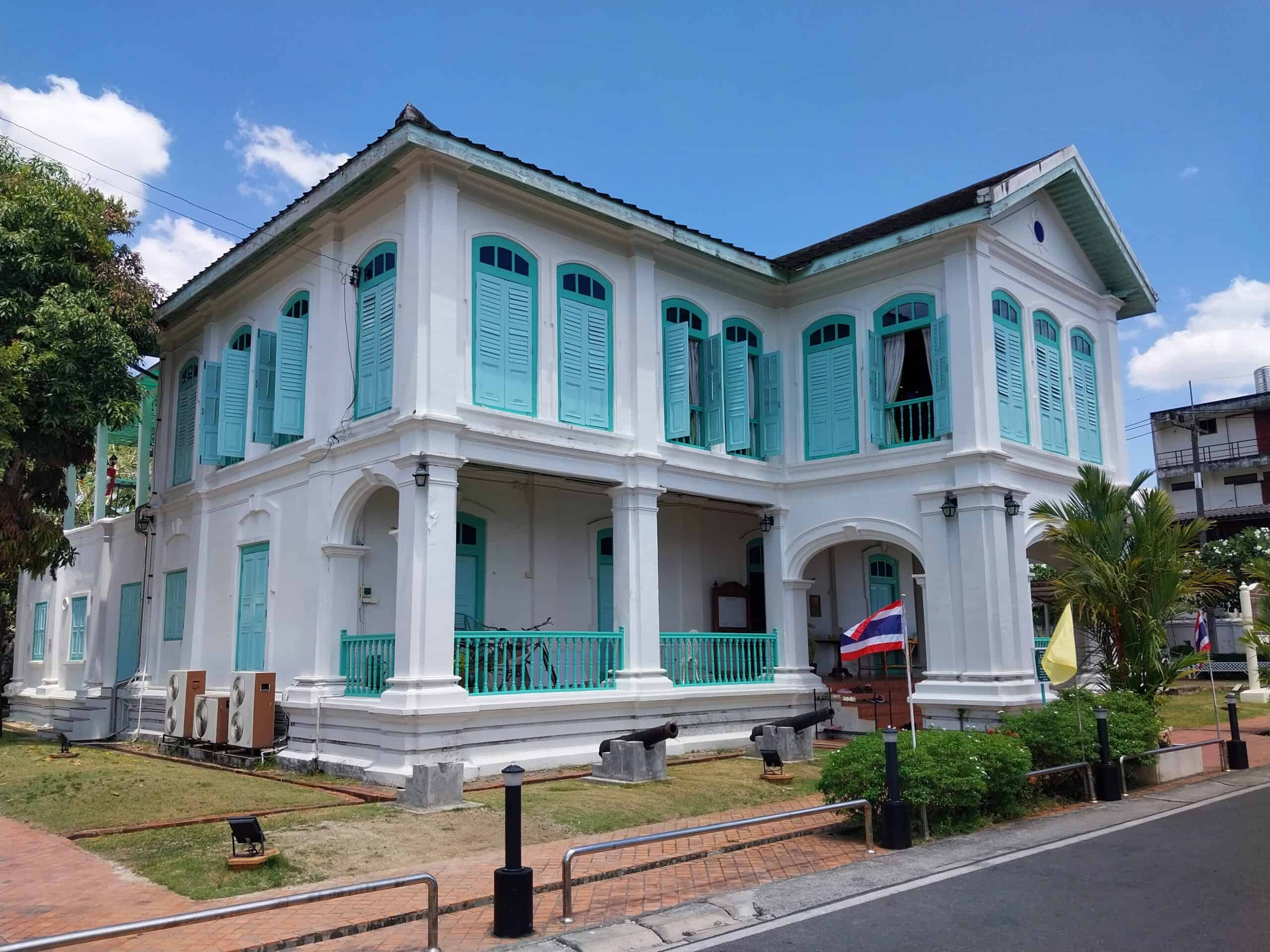
It was during this period of time that the present day border between Thailand and Malaysia was established, leaving in its wake a diverse history and rich culture in provinces and states along both sides of the Thailand-Malaysia border. A history and culture that the Satun National Museum has been highlighting for nearly 25 years now.
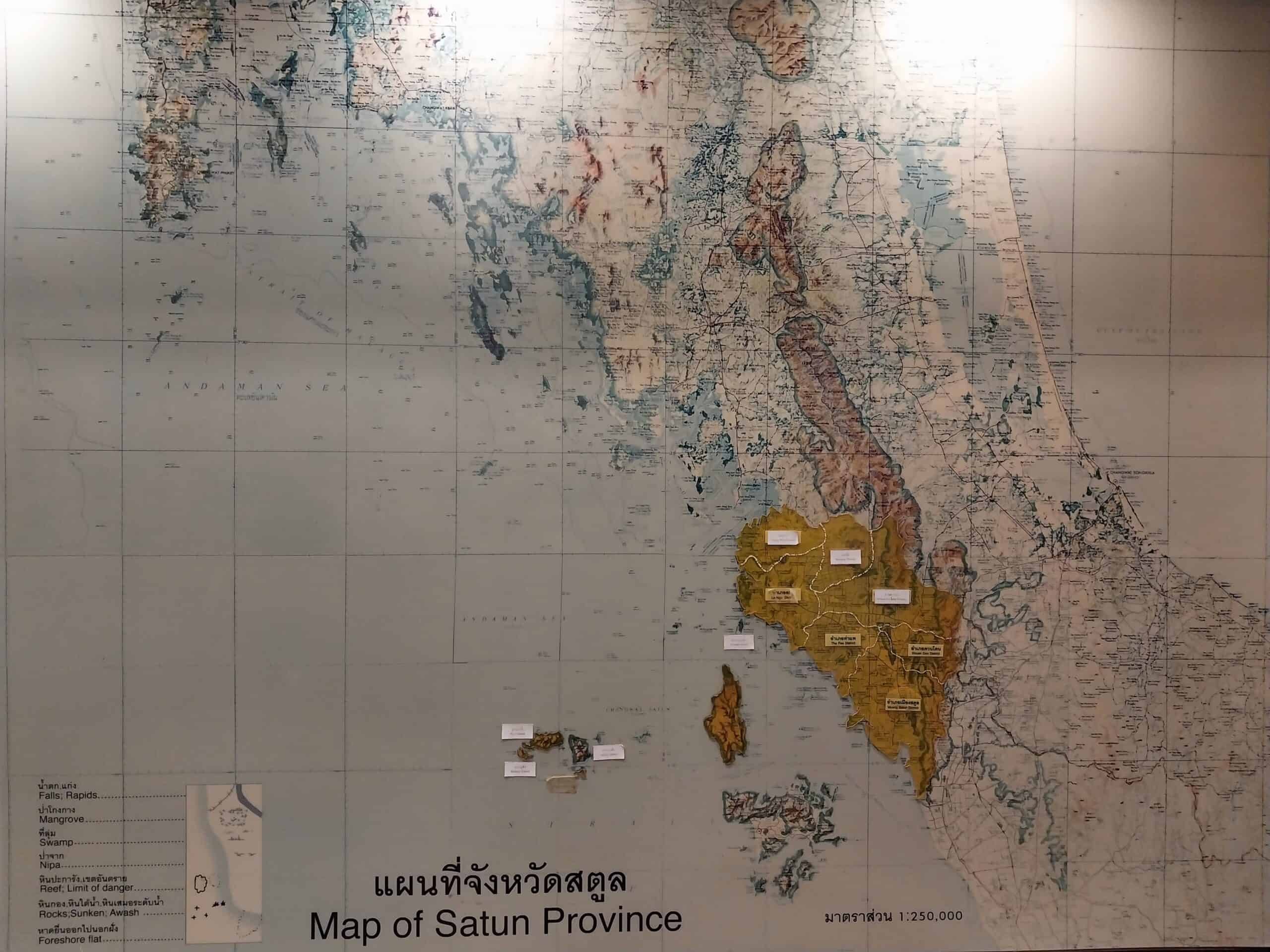
Satun National Museum itself has a diverse history of its own. The museum is housed in a 2-story building that was previously known as the Kuden (or Ku Den) Mansion. Completed in 1902, the mansion was to be used as the royal residence of King Rama V when he was in town, but apparently he never actually stayed there. Later, the mansion was turned into the governor’s residence.
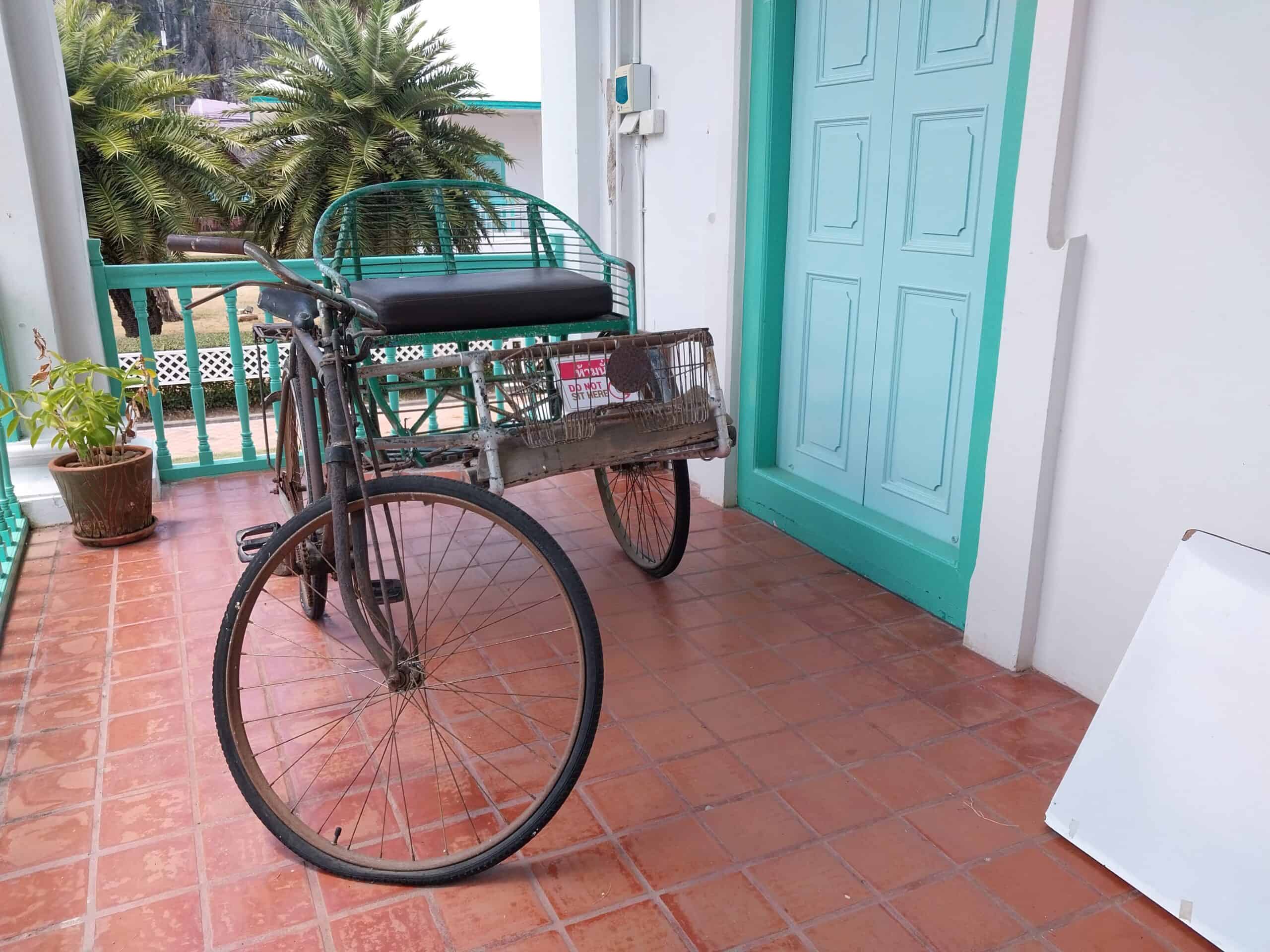
In 1941, during World War II, the mansion was taken over by the Japanese Military and used as a command office. Japan had, at that time, formed an agreement with Thailand making them part of the Axis alliance until the end of the war.
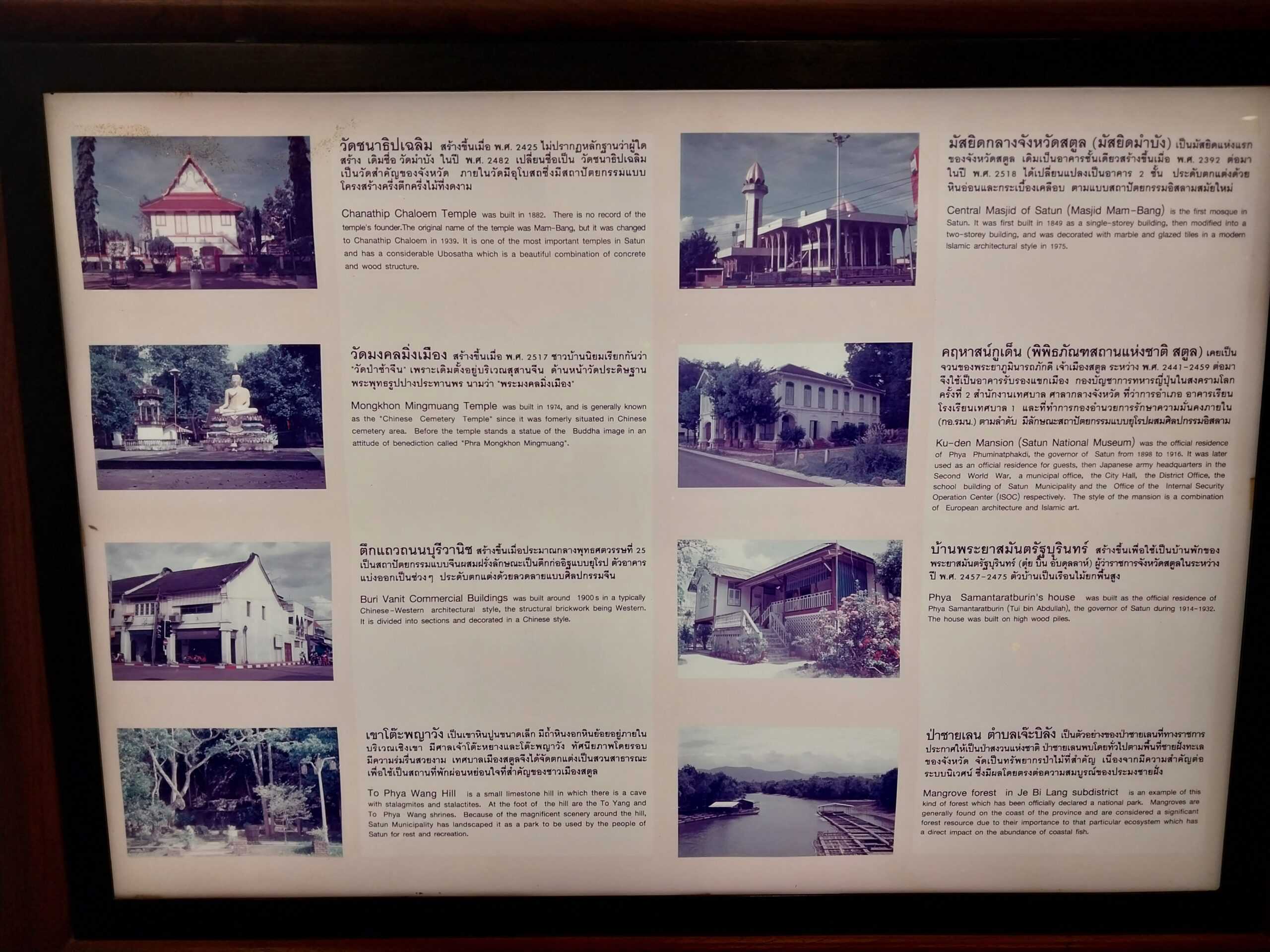
From 1947 until 1963, the Ku Den Mansion was even known as Satun’s ‘City Hall. But it wasn’t until 1997 that the building was recognized and registered as a National Historic Site. It was then refurbished and resurrected into the excellent museum that it is today. With much fanfare, the 2000 opening ceremony was presided over by Princess Maha Chakri Sirindhorn, the third child of the late King Bhumibol Adulyadej.
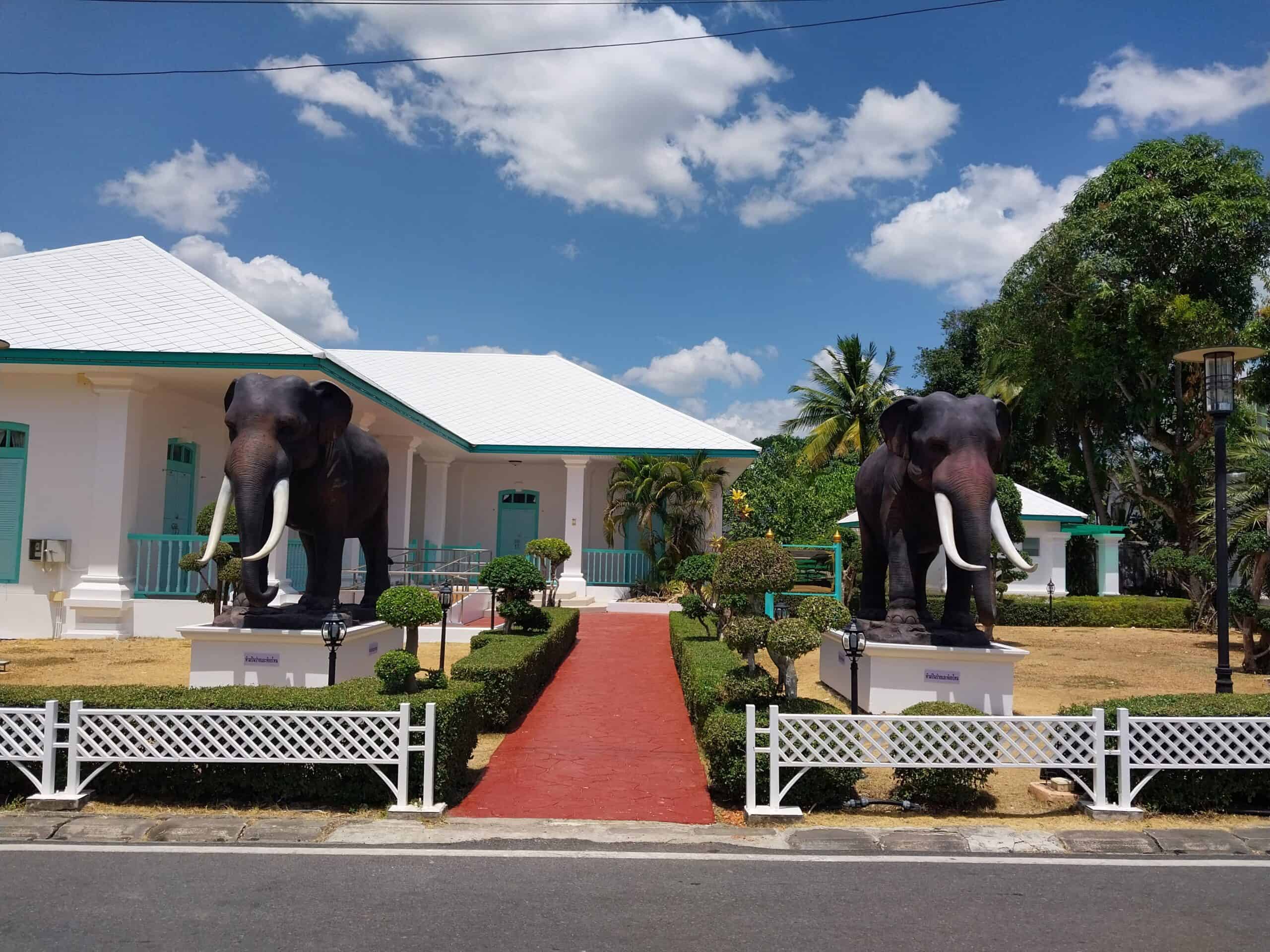
Satun National Museum Layout
The museum is divided into 6 exhibition rooms: History and background of Satun Province, Satun’s way of Life, Governor’s Residence Room, Traditional Satun House Room, Kuden Mansion’s Living Room and the Thai-Muslim Cultural Room. A map is provided to help visitors find their way through the slightly overwhelming maze of information.
History and Background of Satun Province Room
The History and Background of Satun Province room focuses on geology, geography, and the pre-historic aspects of Satun, as well important events in the history of Satun. It also highlights the history of Koh Tarutao Island and the local ‘Sakai’ tribe which is more correctly referred to as the Manni Tribe. (‘Sakai’, by the way, is used in a derogatory manner in some communities). This particular room is especially interesting and informative for those intrigued by the region.
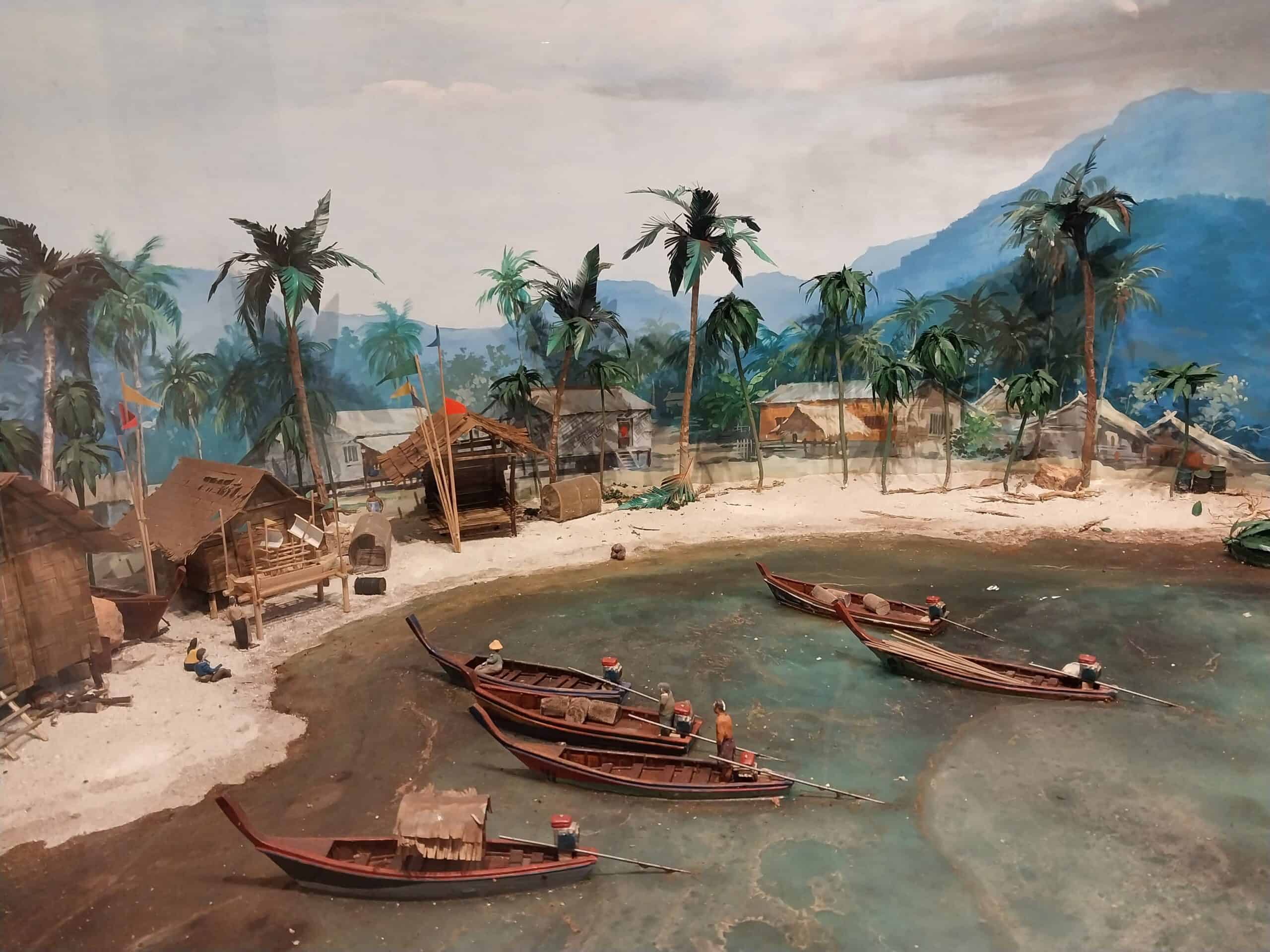
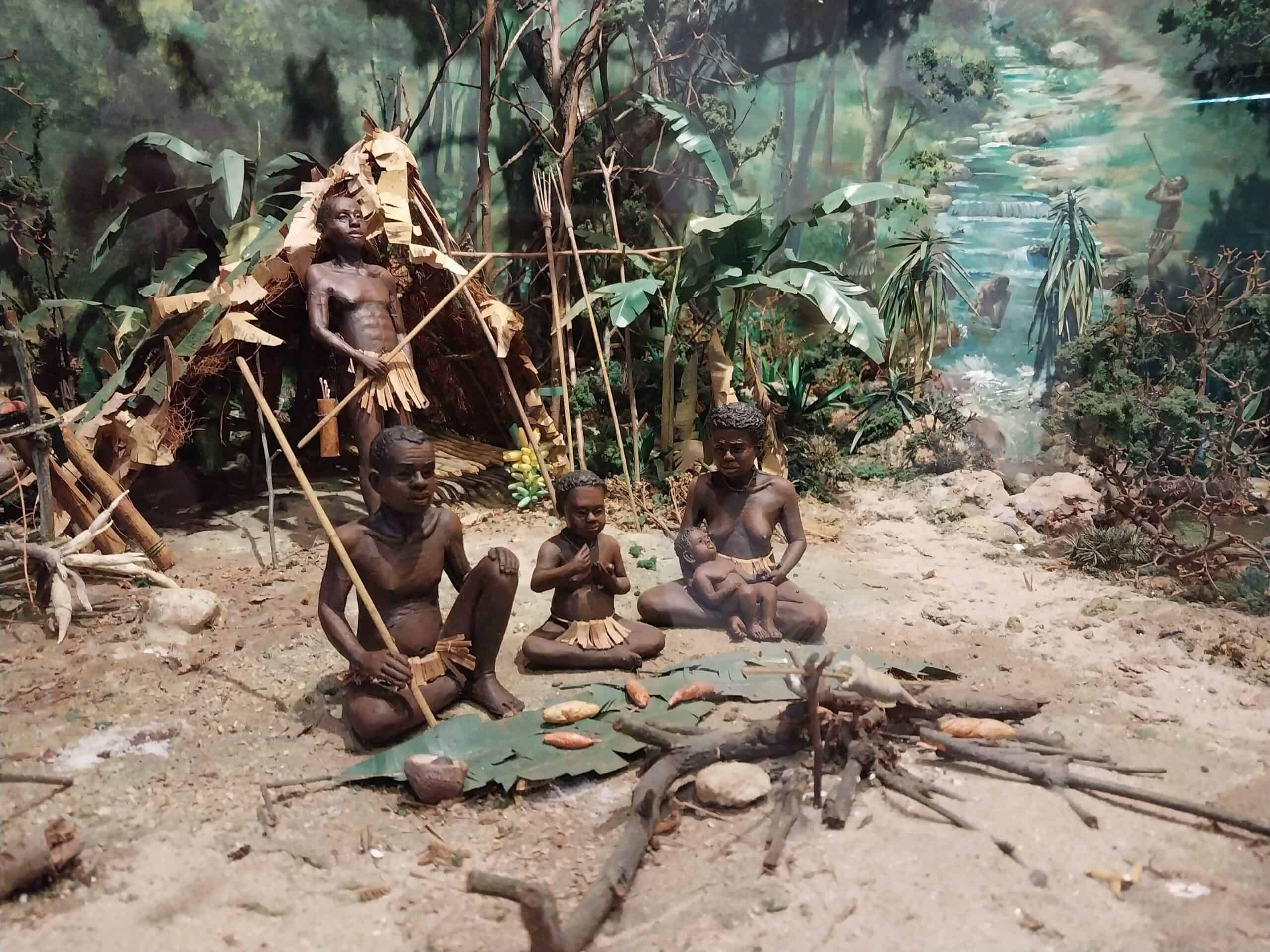
Satun’s Way of Life Room
Satun’s Way of Life room includes displays of Urak Lawoi sea gypsy life on Koh Lipe, the making of traditional pottery at Yan Sue Village, and a glimpse of life in the fishing community of Thammalang Village. None of which would present itself to anyone arriving at Satun via ferry or main highway routes. In fact, you’ll barely find these fascinating local cultures mentioned in tour brochures, so do look closely and take notes.
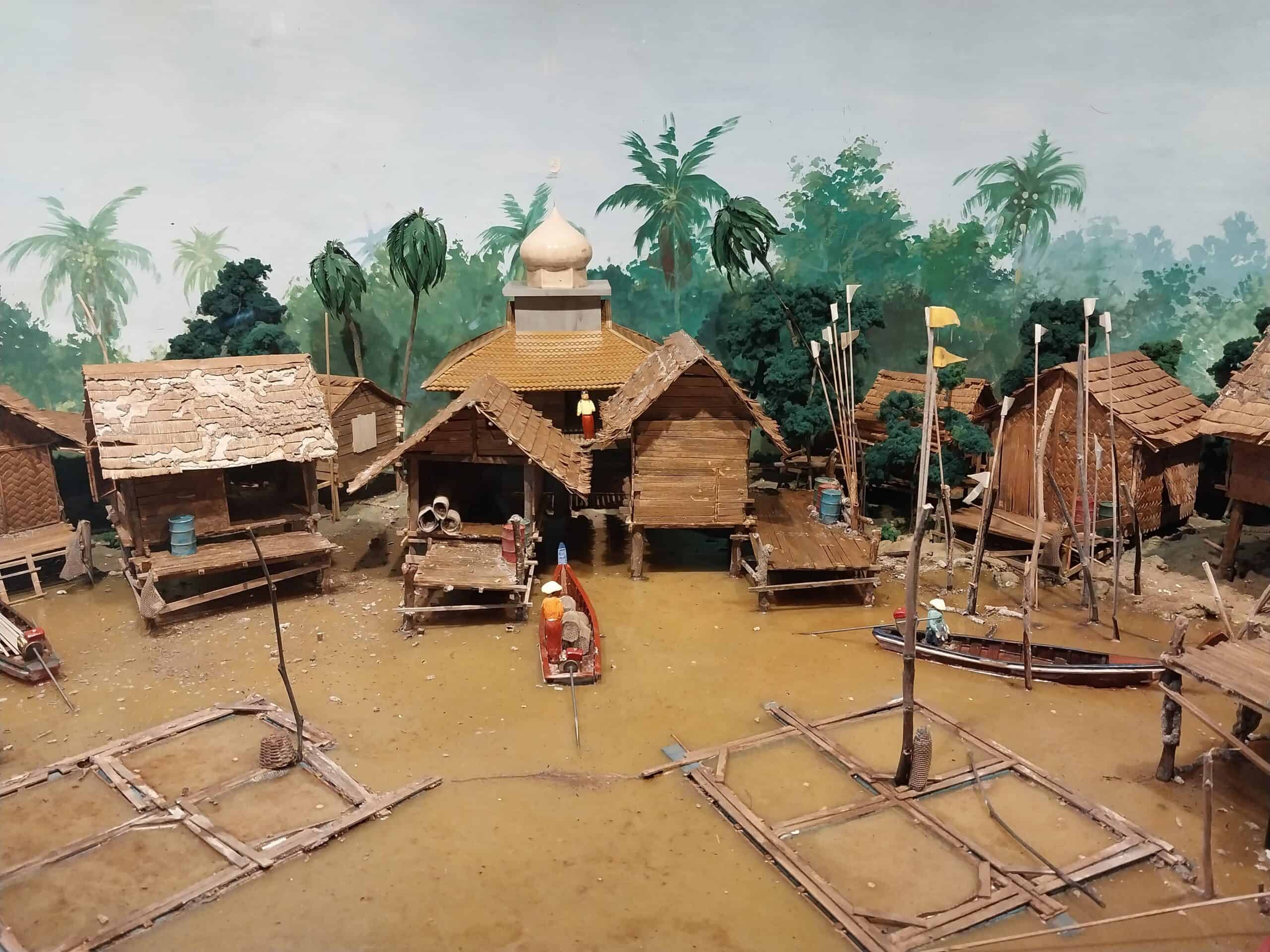
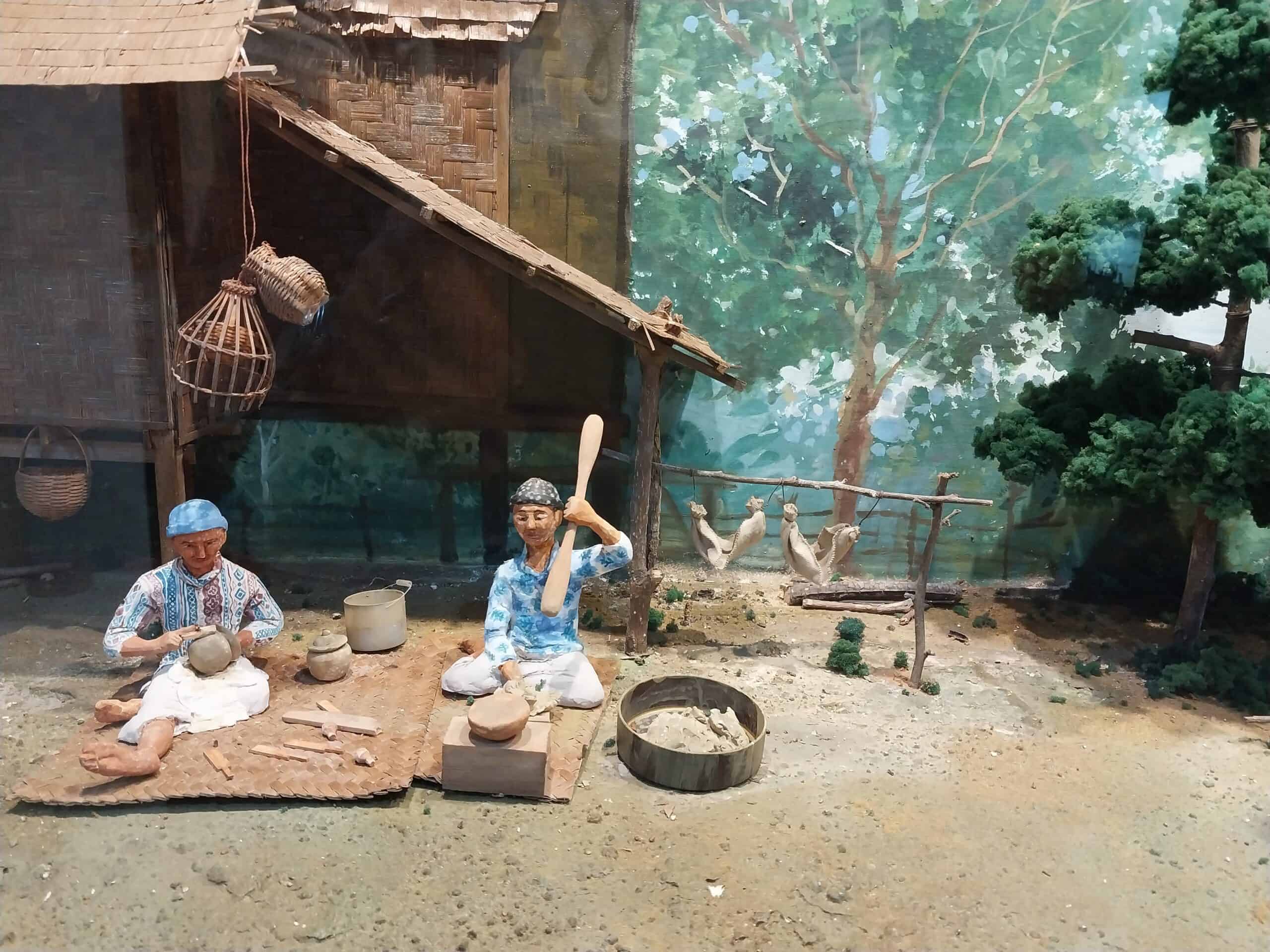
Governors’ Residence Room
Phraya Phuminatphakdi was the Governor of Satun (1896 – 1909), during the reign of King Rama V. He’s also credited with building the original Kuden Mansion as well as being instrumental in securing Koh Lipe Island for Thailand during the Siam Anglo treaty signing. Koh Lipe island almost became part of Kedah, Malaysia had it not been for the governor pointing out that the Urak Lawoi (Thai sea gypsy tribe) had populated the island for decades and thus is should be assigned to Thailand.
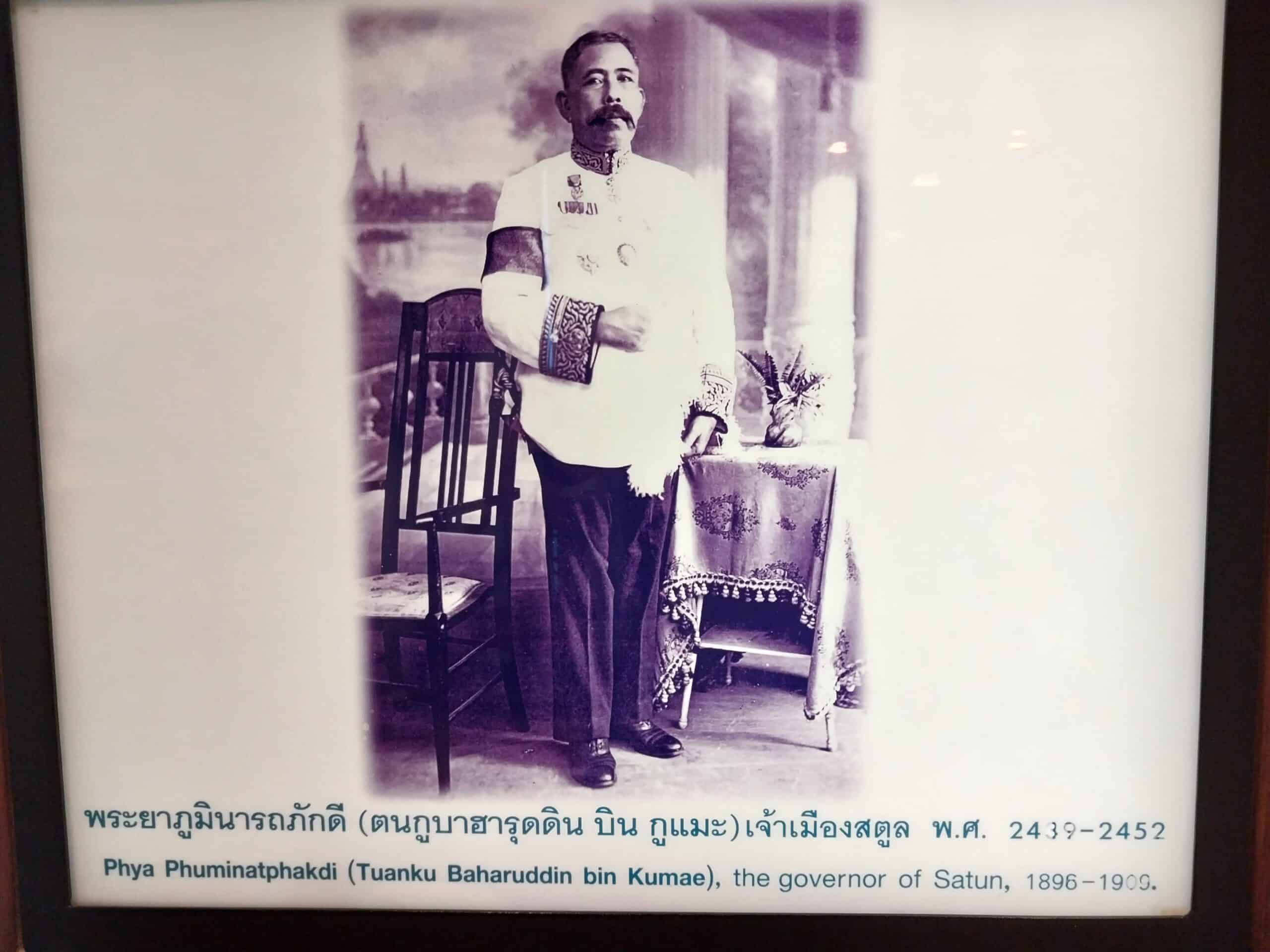
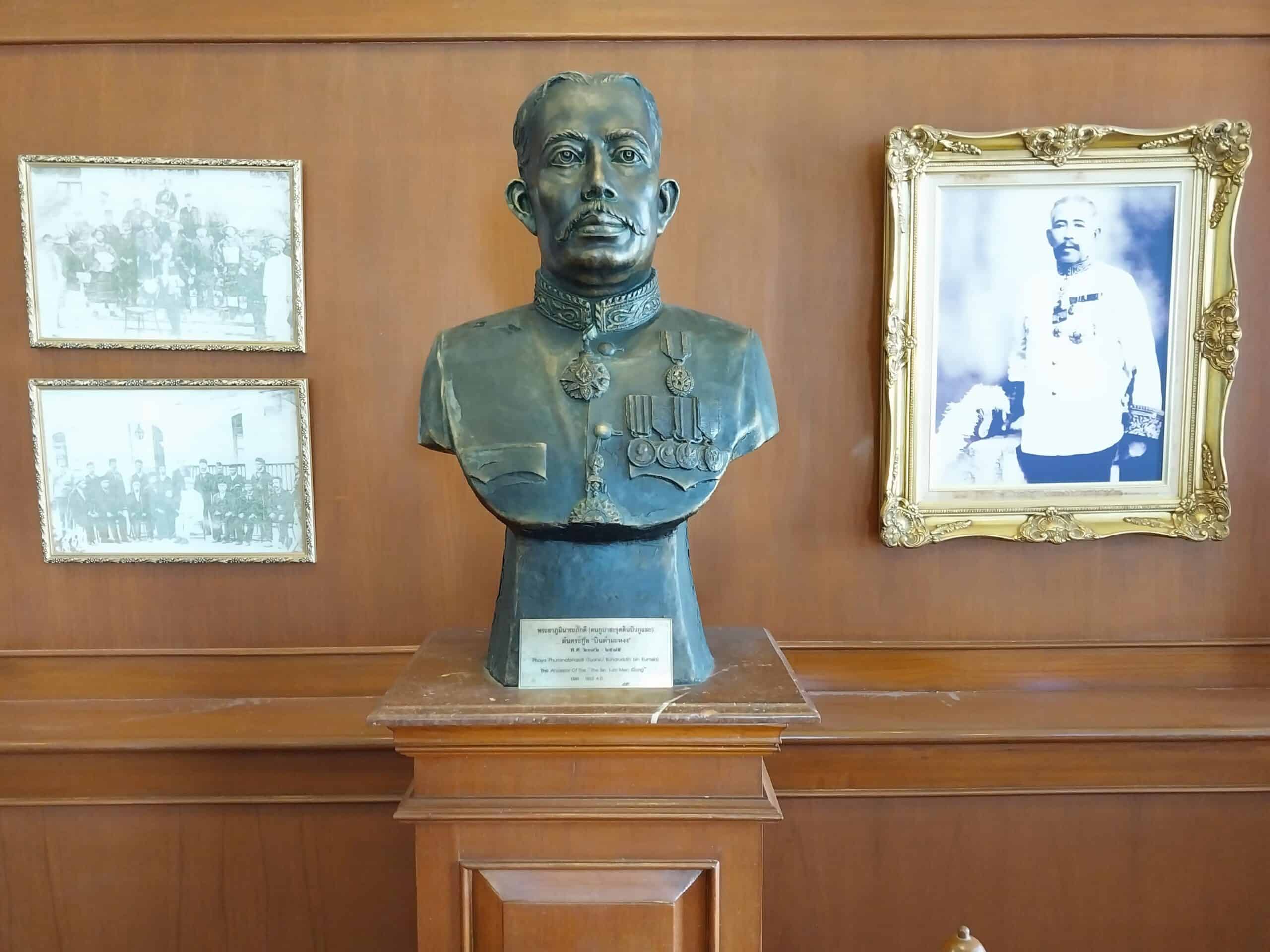
There are several different spellings of the governors name floating around the internet; Praya Poomnardpakdee, Phya Phuminatphakdi, Phraya Bhuminat Bhakdi and Tuanku Baharuddin bin Kumae, but for the sake of this blog post I’ll stick with Phraya Phuminatphakdi. The Thai words ‘Phya’ and ‘Phraya’ refer to ‘leader’. Nevertheless, the governor was an important figure in the history of Satun. The governor’s residence room has photos and some basic memorabilia, but his presence is noticeable throughout the museum.
Traditional Satun House Room
Malaysians will find the traditional Satun House room a déjà vu of their own traditional houses as they are quite similar. The kitchen and bedroom displays alongside various baskets and tools a strong indicator of life in the previous Malay Kingdom of Setul Mambang Segara (now Satun, Thailand).
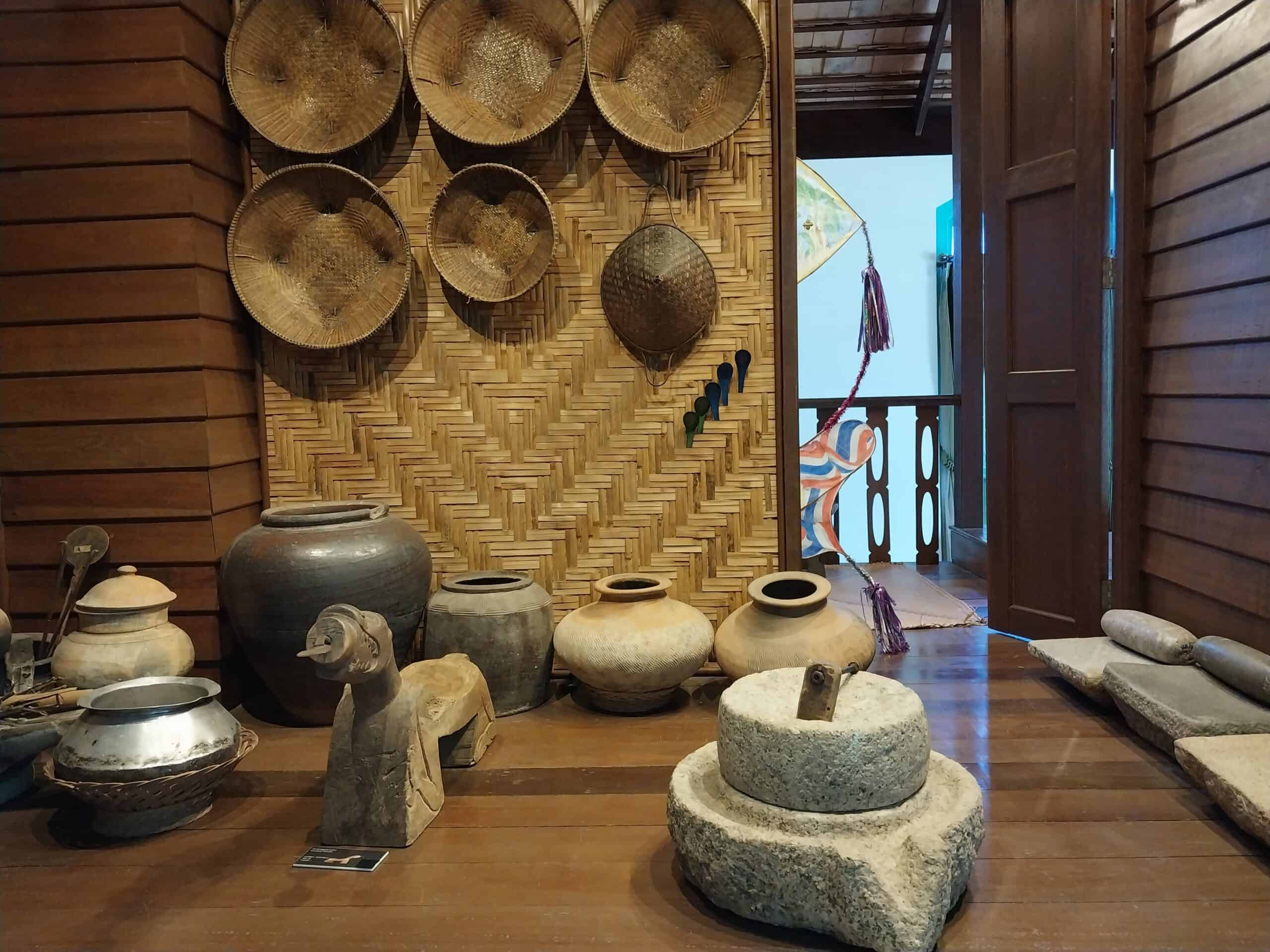
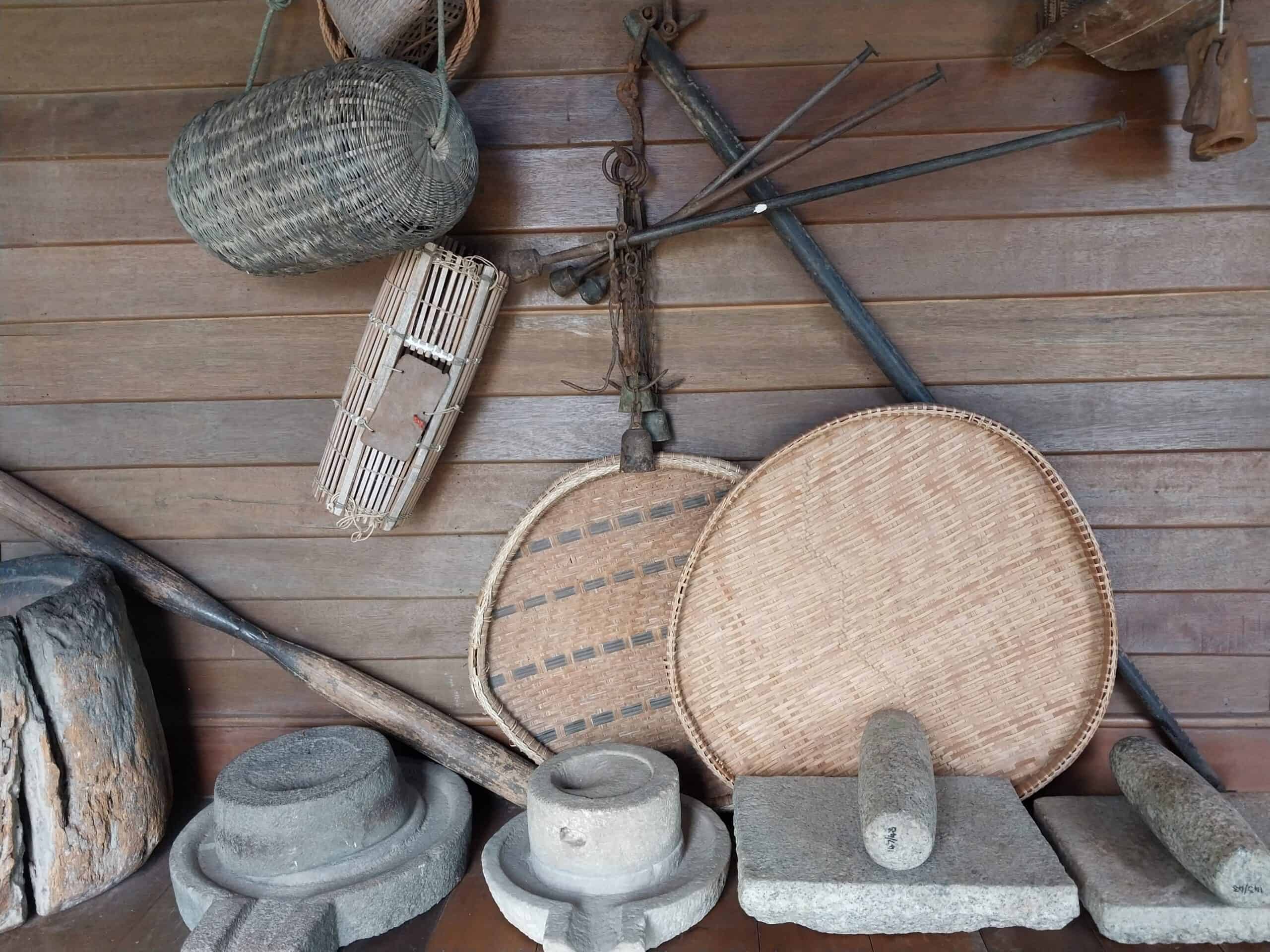
Kuden Mansion’s Living Room
The Kuden Mansion’s Living Room is a reconstruction of the mansion’s original style. A far cry from the woven mat and thatched roof general public norm, and a glimpse of how the other half lived.
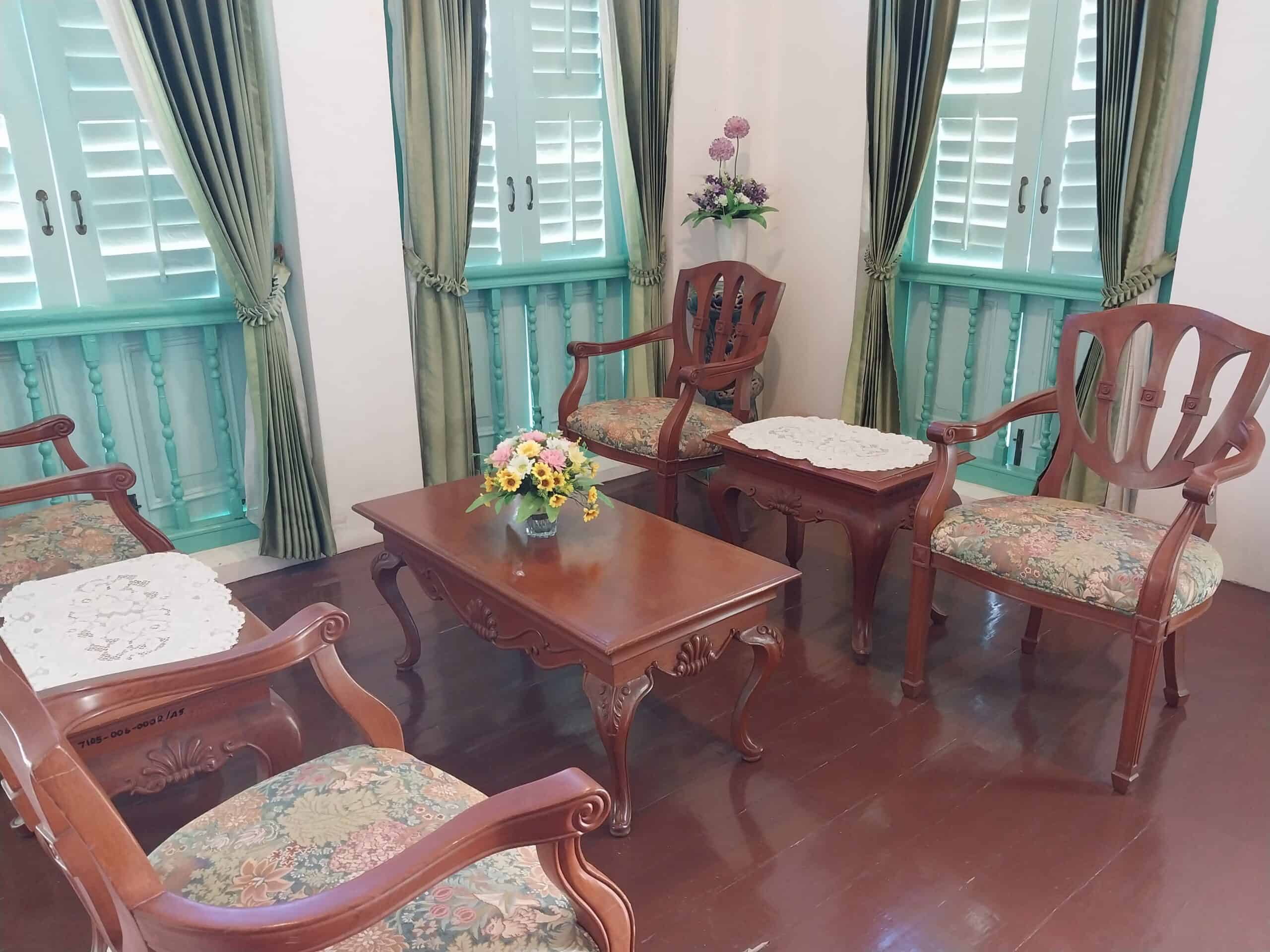
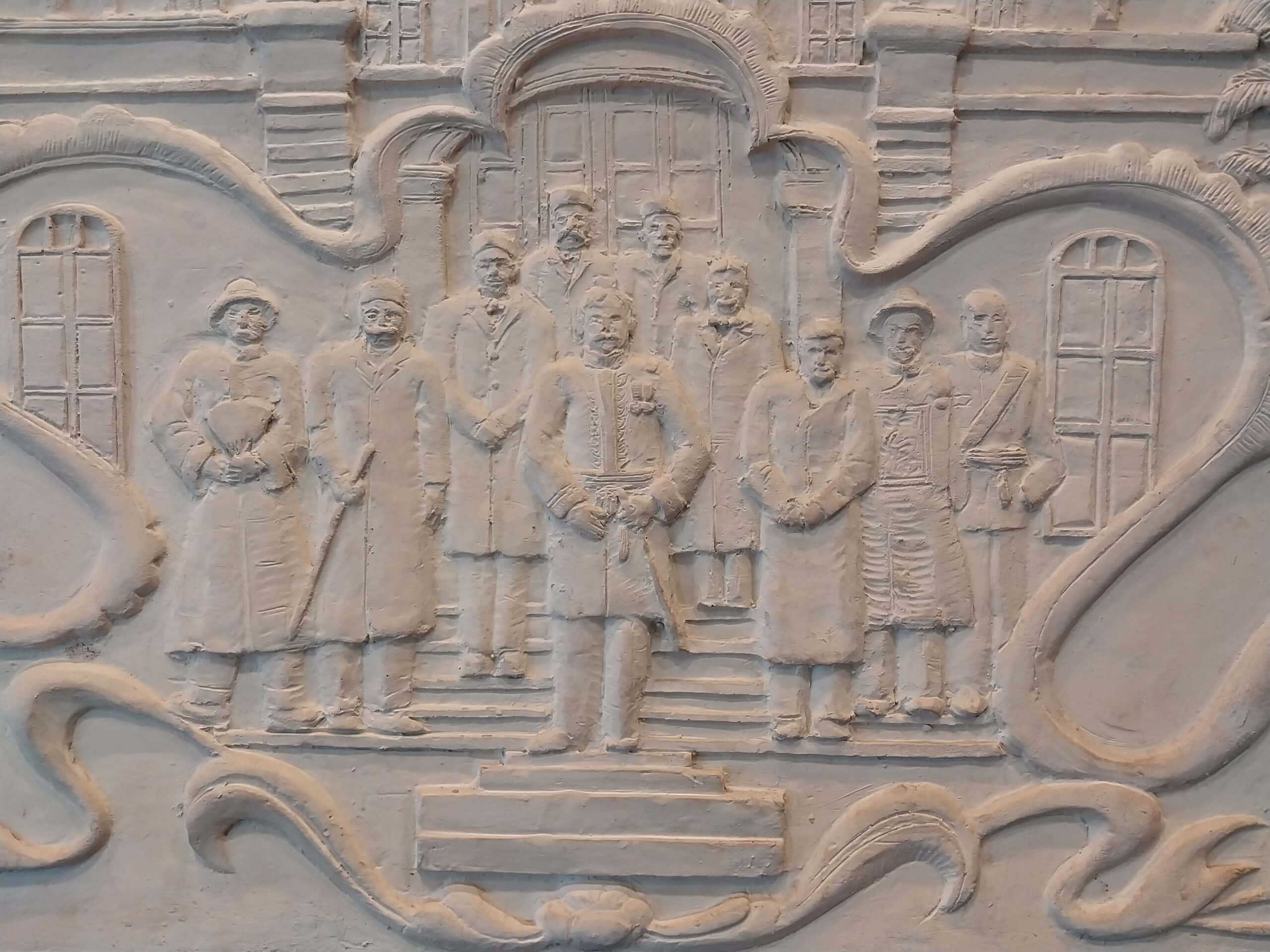
Thai-Muslim Cultural Room
The Thai-Muslim Cultural room is an eye opener for western tourists unfamiliar with Muslim culture and traditions. Traditional games, dances and songs are also explained. Displays and dioramas come with detailed descriptions in both Thai and English, as well as Australian voiceovers.
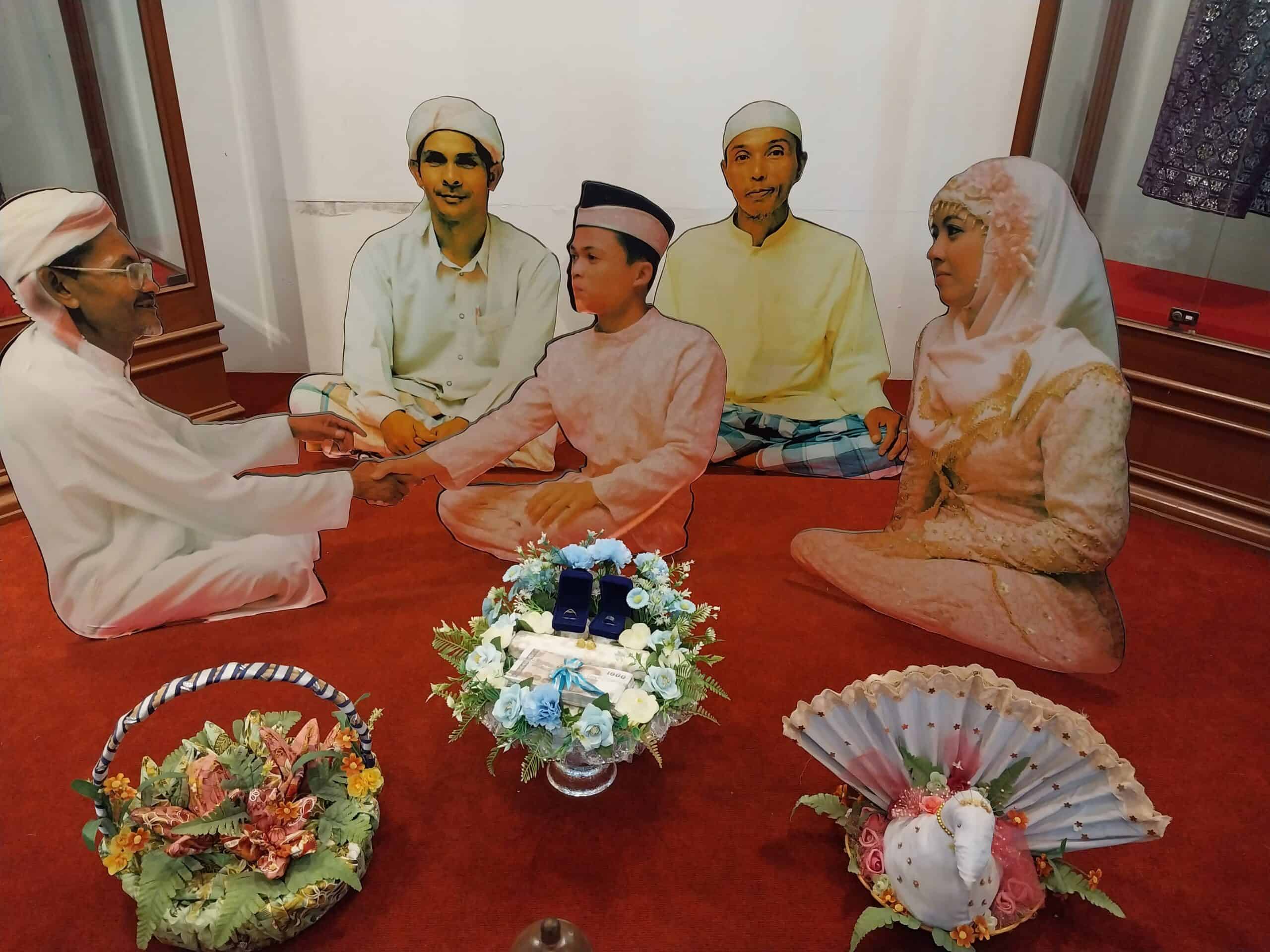
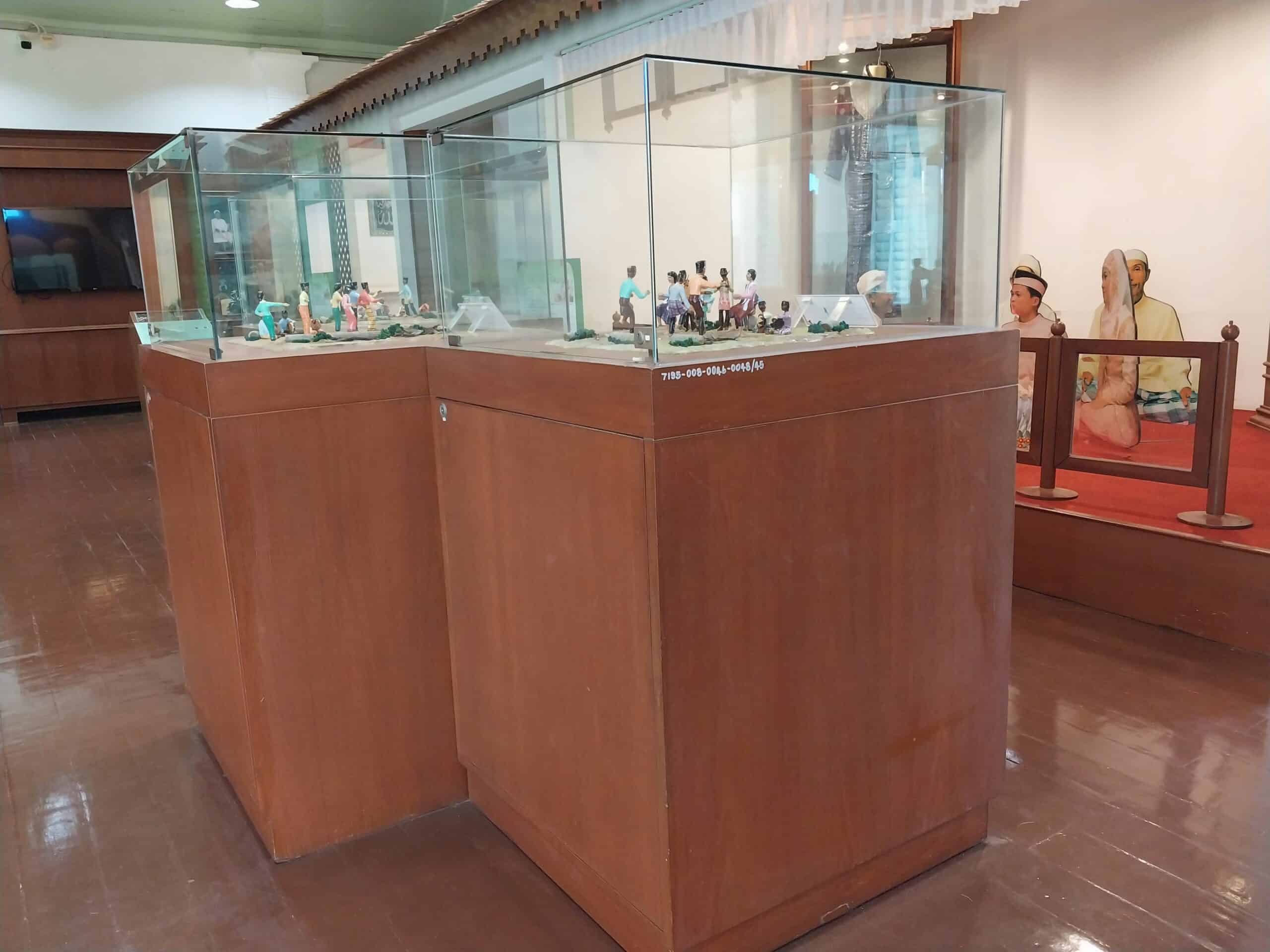
Getting there
Satun National Museum is located on Soi 5 (a small side street) between Satun Thani Road and Ruangritjaroon Road. Two large blue and white archways are at each end of the small side street giving it a bit of a grand introduction. An interesting mural graces a building at the Satun Thani Road entrance giving the area a new artsy vibe with a promising future. If you have any difficulties finding the museum or communicating your transportation needs to a local taxi, keep a photo on your phone to show potentially helpful locals or drivers.
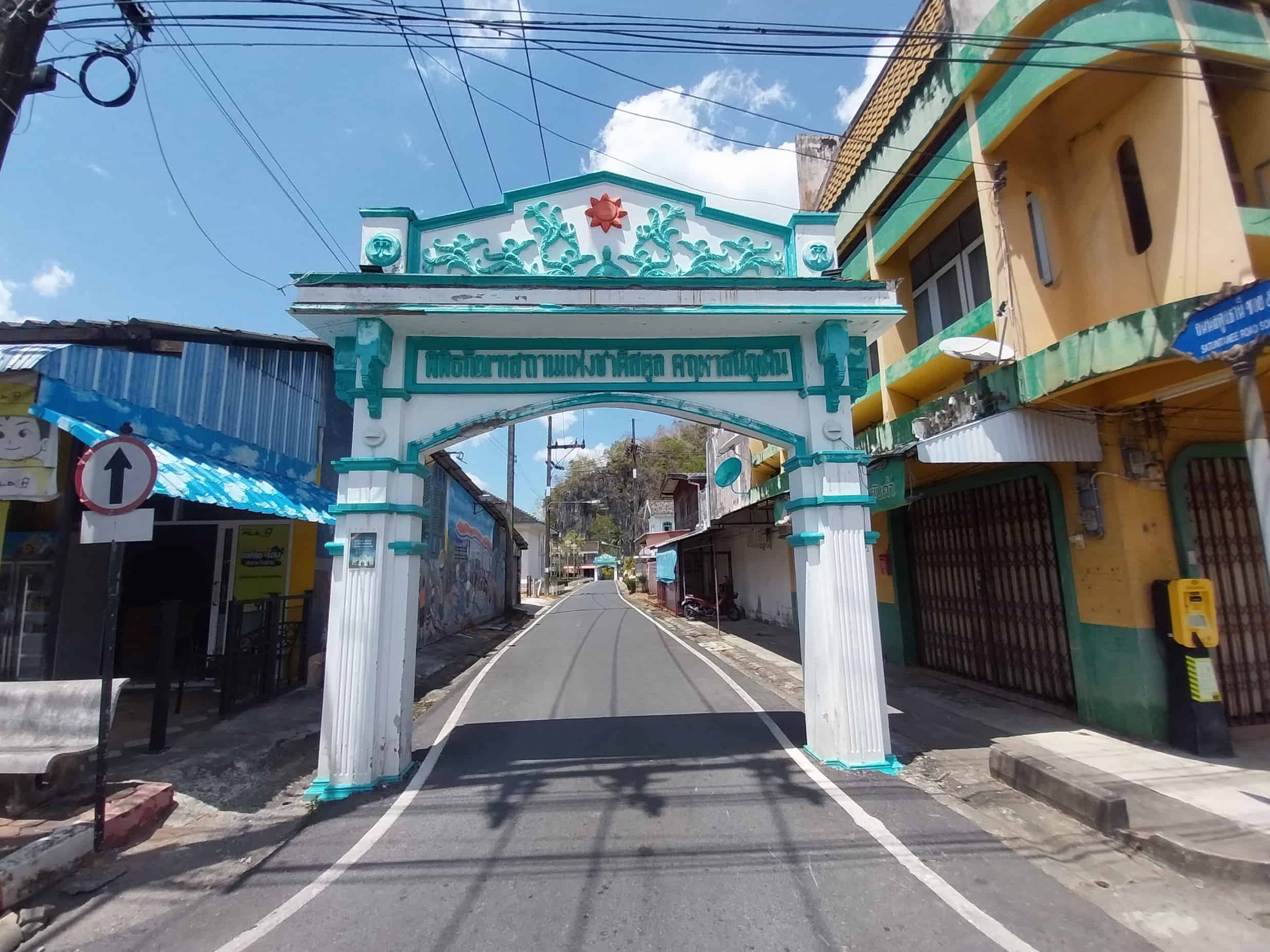
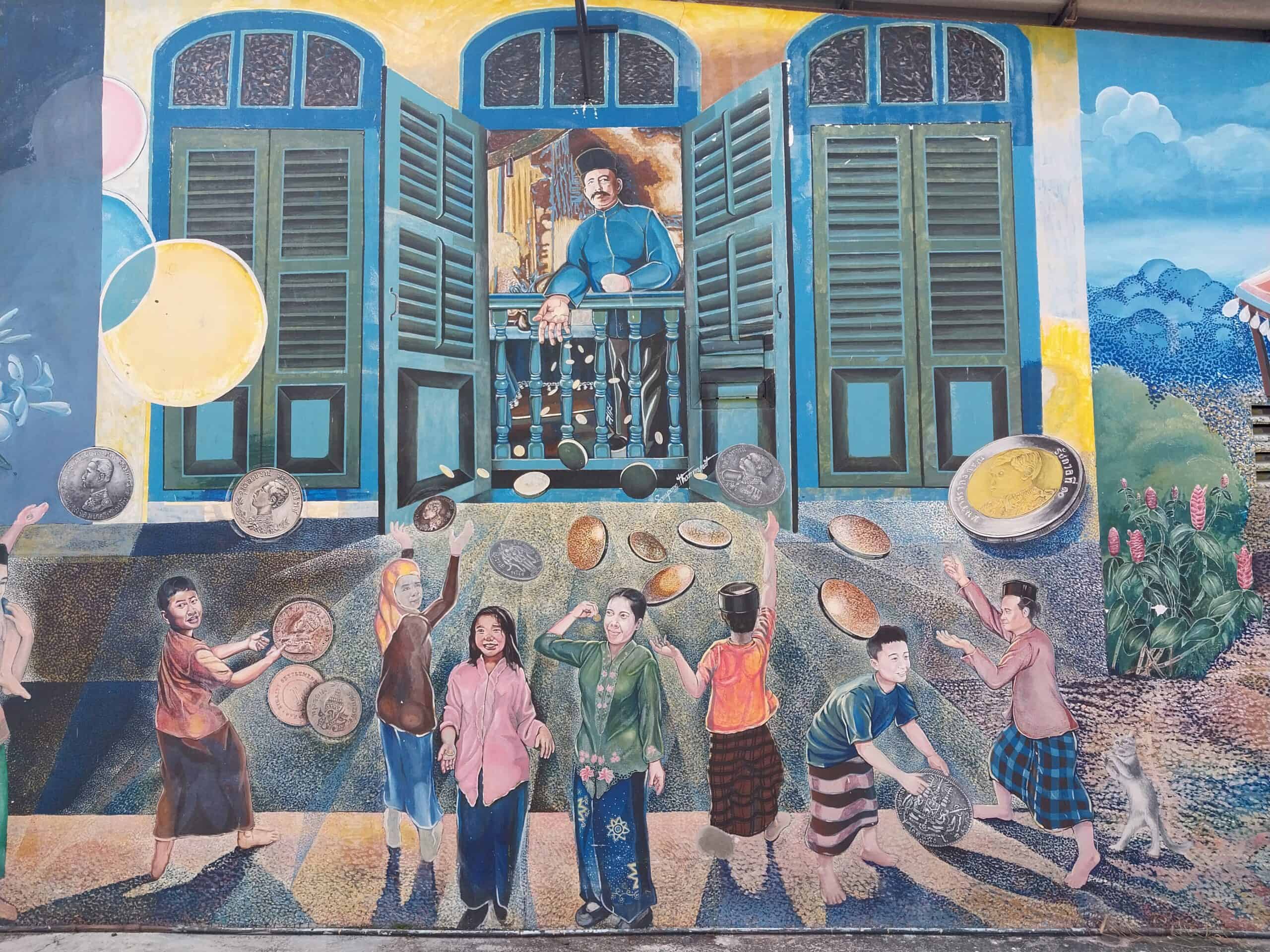
Give yourself at least an hour at the Satun National Museum, because there is a lot of information to absorb. It is all quite interesting and will definitely have you looking at Satun, Thailand through a new set of eyes.
Satun National Museum
Soi 5 Satun Thani Rd.
Phiman Mueang Satun
Tel: 074-723 140
Open: Wednesday thru Sunday 09:00 to 16:00
Entry: 50 Baht (foreigner)

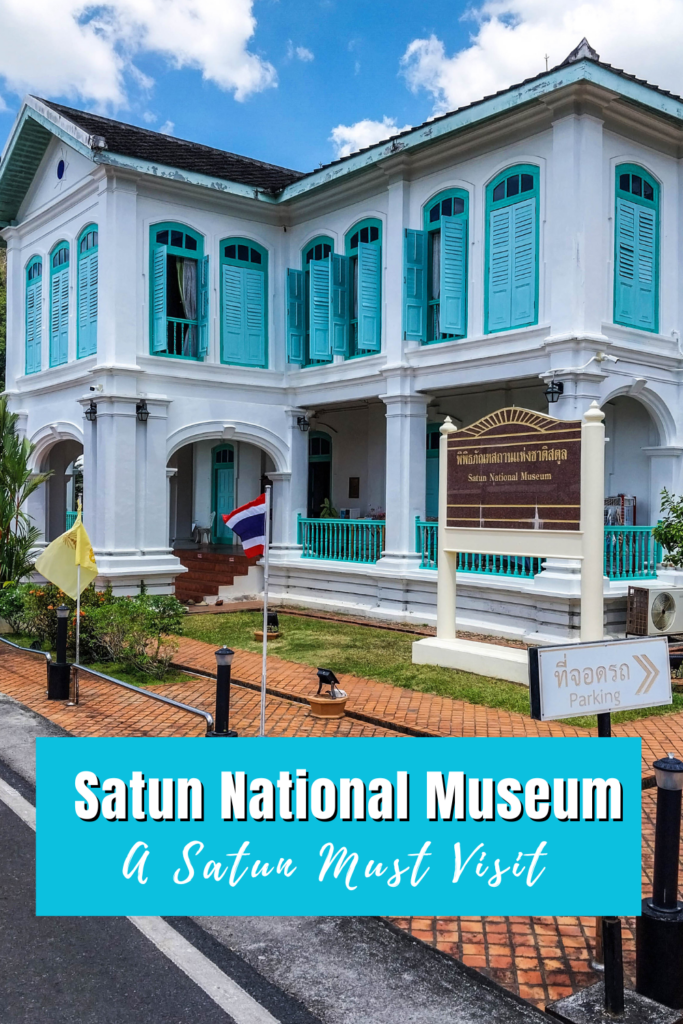
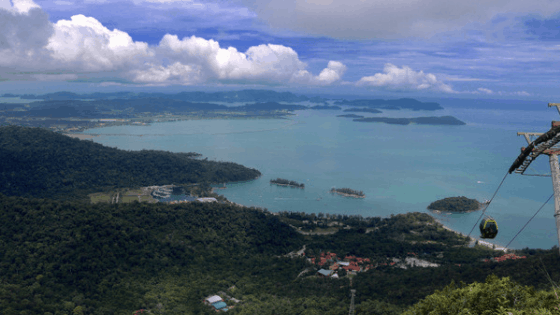
Leave a Reply